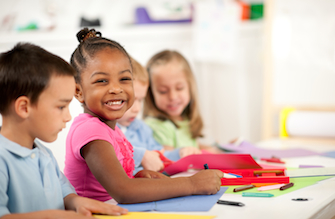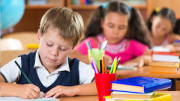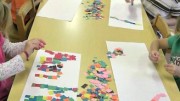Development Stages Of Preschoolers
 Three and four-year-old children are often called preschoolers. Preschool children are making developmental strides and express an interest in the world around them. They want to touch, taste, and smell, hear, and test things for themselves. They are eager to learn. They learn by experiencing and by doing. Preschoolers learn from their play. They are busy developing skills, using language, and struggling to gain inner control.
Three and four-year-old children are often called preschoolers. Preschool children are making developmental strides and express an interest in the world around them. They want to touch, taste, and smell, hear, and test things for themselves. They are eager to learn. They learn by experiencing and by doing. Preschoolers learn from their play. They are busy developing skills, using language, and struggling to gain inner control.
Preschoolers want to establish themselves as separate from their parents. They are more independent than toddlers. They can express their needs since they have greater command of language. Fears often develop during the preschool years. Common fears include new places and experiences and separation from parents and other important people. You can expect the preschool child to test you over and over again, to use profanity and other forbidden words, and to act very silly. Preschoolers may still have trouble getting along with other children, and sharing may still be difficult. Because of their developing imaginations and rich fantasy lives, they may have trouble telling fantasy from reality. They may also talk about imaginary friends. Preschoolers need clear and simple rules so that they know the boundaries of acceptable behavior.
Understanding their growth and development will help you guide preschoolers through this stage. This fact sheet lists some of the characteristics of preschoolers. These characteristics are listed for three main areas: physical (body), social (getting along with others) and emotional (feelings), and intellectual (thinking and language) development. Remember that all preschoolers are different and reach the various stages at different times.
PHYSICAL DEVELOPMENT
THREE-YEAR-OLD CHILDREN
– They walk on tip toes.
– They stand on one foot.
– They jump horizontally.
– They ride a tricycle.
– They build towers of 6-9 blocks.
– They catch a ball.
– They smear or daub paint. They draw or paint in vertical, horizontal, and circular motions.
FOUR-YEAR-OLD CHILDREN
– They have more small muscle control. They can make representational pictures (for example, pictures of houses, people, and flowers).
– They run on tip toes.
– They hop on one foot.
– They gallop.
– They begin to skip.
– They throw a ball overhand.
– They pump themselves on a swing.
– They like unzipping, unsnapping, and unbuttoning clothes.



